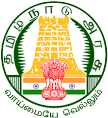The earliest official residence of the Governors of Madras were in Fort St. George, the first one built in the 1640s on what is now the Parade Square. This was pulled down in 1693 and a new one built eastwards where, in later years, it became the core of the Secretariat. When the Governor’s ‘garden house’, near where the Law College now is, was destroyed by the French in 1746, a new garden house was acquired for the Governor after the French withdrawal in 1749. This house, which belonged to Mrs. Antonia de Madeiros, a member of perhaps the richest family of the time, became the core of Government House around which developed what is now called Government Estate. It was in the 1820s that Governor Thomas Munro (1820-27) made Government House the official residence and what has now grown into Raj Bhavan and was once Guindy Lodge, the Governor’s country house.
Guindy Lodge, it is believed, was built by Governor William Langhorne (1672-78) in the early 1670s in garden space carved out of the Guindy Forest that had helped make St. Thomas’ mount a salubrious place for rest and recreation. When Langhorne left in 1678, he sold the property to the then Chief Merchant of Madras, Chinna Venkatadri, the younger brother of one of the founders of the city, Besi Thimappa. When Chinna Venkatadri had problems with the East India Company, he gifted Guindy Lodge to the Company’s Madras Government.
Used as a Government ‘country house’ till the area was ravaged by the French and Mysore in the 18th century, Guindy lodge then passed into private hands at the beginning of the 19th century. The first private owner mentioned is Mr. Gilbert Ricketts of Madras, who in 1813, was seeking a loan from the Government bank. When Ricketts died intestate in December, 1817, with the property heavily mortgaged to the Bank and one Mr. Griffiths, the estate devolved on the Registrar of the Supreme Court as Administrator. Protracted legal proceedings favoured the Bank which, thereafter, in 1821, offered the property to the Government for a sum of 10,000 pagodas (or Rs.35,000). Government also acquired a nearby property for Rs.8,750 from the Armenian merchant Joseph Nazar Shawmier. Between 1821 and 1824, Government linked the two properties with a third purchaser and the Raj Bhavan property as it existed at Independence came into being.
Governor Sir Thomas Munro was responsible for the purchase of Guindy Lodge, and expansion of its estate. He pointed out the necessity of a country house for the Governor “where he could transact public business uninterruptedly”, as his residence in the Fort was at the time being relinquished for the construction of the Secretariat, while the country house on Mount Road was rapidly losing all claims to that description owing to the many buildings springing up in the vicinity.
When Guindy Lodge became the official country residence of the Governor, there were three single-storeyed bungalows in existence on the site of the present building. Between 1837 and 1841, various alterations and improvements were carried out by Lord Elphinstone, whose pet project was to develop Guindy Lodge into something like what it is today. He also developed what is now called Taluk Office Road as a grand drive to the house from Mount Road. Governors the marquis of Tweeddalel, Sir Henry Pottinger, Lord Harris, and Sir Henry ward made further improvements and by 1863 the Lodge had acquired its present shape. Till 1900, improvements to Guindy Lodge and other buildings on the estate continued. A proposal by Lord Willingdon in 1922 to make Guindy Lodge, the official residence of the Governor was considered and then shelved, and Government House retained its status till 1947, when it was decided that the Guindy residence being far from the seat of power, was a better location for what was to be called Raj Bhavan. Lord Erskine was responsible for the addition of the wings in 1937 which buttress three corners in the Main Block.
Raj Bhavan, Guindy, is situated in the Guindy Park Reserved Forest Area. The black buck, a rare species now almost extinct, was introduced in Guindy Park by Lord Willingdon in 1924. The present area of the Raj Bhavan Estate is 156.14 acres after large areas of land adjoining Raj Bhavan were made over for other public purposes, as shown below.
There are also two pieces of land near the Adyar River Bed and in Ekkaduthangal respectively, totalling 8.63 acres, belonging to Raj Bhavan. Here are located water pumping stations for supply to Raj Bhavan.
Raj Bhavan Chennai Verandah : In and around Raj Bhavan, we have deer (spotted deer, black buck and albino), mongoose, jackals, many varieties of reptiles and a large number of birds like partridges, pheasants, parrots, quail, paradise fly-catcher, etc. Bird watchers have noticed migratory birds here.

